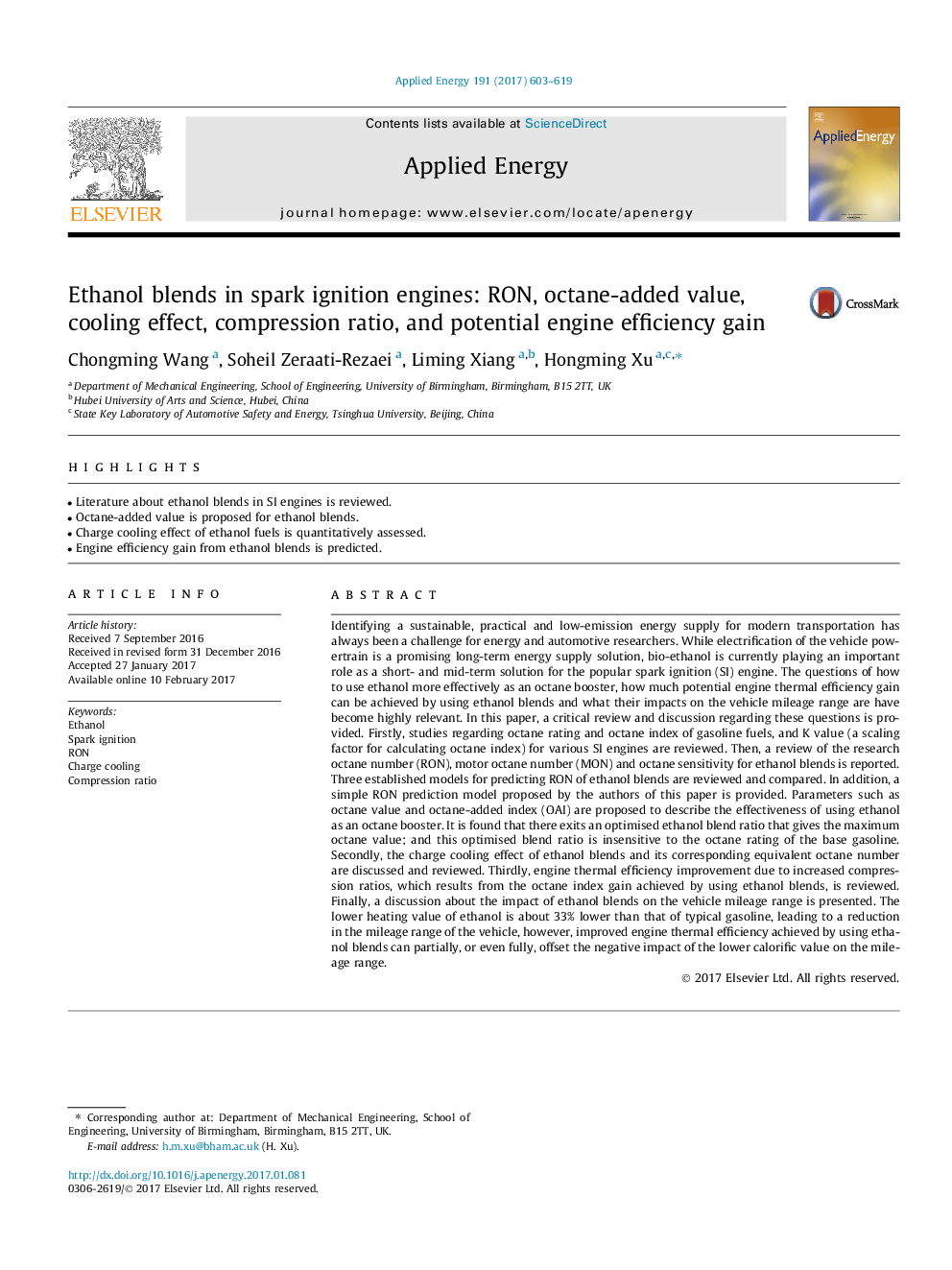| کد مقاله | کد نشریه | سال انتشار | مقاله انگلیسی | نسخه تمام متن |
|---|---|---|---|---|
| 6478796 | 1428099 | 2017 | 17 صفحه PDF | دانلود رایگان |

- Literature about ethanol blends in SI engines is reviewed.
- Octane-added value is proposed for ethanol blends.
- Charge cooling effect of ethanol fuels is quantitatively assessed.
- Engine efficiency gain from ethanol blends is predicted.
Identifying a sustainable, practical and low-emission energy supply for modern transportation has always been a challenge for energy and automotive researchers. While electrification of the vehicle powertrain is a promising long-term energy supply solution, bio-ethanol is currently playing an important role as a short- and mid-term solution for the popular spark ignition (SI) engine. The questions of how to use ethanol more effectively as an octane booster, how much potential engine thermal efficiency gain can be achieved by using ethanol blends and what their impacts on the vehicle mileage range are have become highly relevant. In this paper, a critical review and discussion regarding these questions is provided. Firstly, studies regarding octane rating and octane index of gasoline fuels, and K value (a scaling factor for calculating octane index) for various SI engines are reviewed. Then, a review of the research octane number (RON), motor octane number (MON) and octane sensitivity for ethanol blends is reported. Three established models for predicting RON of ethanol blends are reviewed and compared. In addition, a simple RON prediction model proposed by the authors of this paper is provided. Parameters such as octane value and octane-added index (OAI) are proposed to describe the effectiveness of using ethanol as an octane booster. It is found that there exits an optimised ethanol blend ratio that gives the maximum octane value; and this optimised blend ratio is insensitive to the octane rating of the base gasoline. Secondly, the charge cooling effect of ethanol blends and its corresponding equivalent octane number are discussed and reviewed. Thirdly, engine thermal efficiency improvement due to increased compression ratios, which results from the octane index gain achieved by using ethanol blends, is reviewed. Finally, a discussion about the impact of ethanol blends on the vehicle mileage range is presented. The lower heating value of ethanol is about 33% lower than that of typical gasoline, leading to a reduction in the mileage range of the vehicle, however, improved engine thermal efficiency achieved by using ethanol blends can partially, or even fully, offset the negative impact of the lower calorific value on the mileage range.
Journal: Applied Energy - Volume 191, 1 April 2017, Pages 603-619